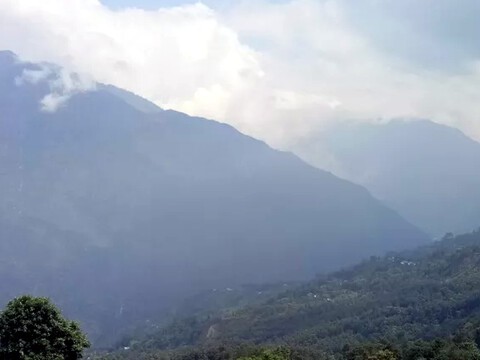In Nepal, Women Entrepreneurs take on the Cardamom Business
The imposing hills of Taplejung, a district in Eastern Nepal, are carpeted with large cardamom plantations.
One of Nepal’s leading large cardamom producing districts, Taplejung contributes the world’s largest output of the valuable spice.
Taplejung is also the place Lila Devi Dahal calls home. Dahal started off in 1998 as a home-based worker alongside her husband—in Nepal, home-based workers produce goods or services for the market from within or around their own homes.
Like most women in the large cardamom field, working in the plantations was Dahal’s own decision. She tends to the plants and, prior to October harvests, toils in the fields to gather the yield.
Dahal’s story is not unusual in Nepal where women make up over 90 percent of the agricultural force.
Large cardamom is no exception and gives women the opportunity to earn a decent living. For Dahal, the income from large cardamom has helped run her home and put her children through school.
However, her income has gone down in the past few years as large cardamom has borne the brunt of a volatile market.
One of Nepal’s leading large cardamom producing districts, Taplejung contributes the world’s largest output of the valuable spice
A few years ago Dahal would earn about NPR 2,000 (approx. $18) for a kilogram. Now she makes a little more than NPR 1,000 (approx. $ 9) for what she says is better quality cardamom.
So, when the idea of Kanchenjunga Himalica Agricultural Udyog (KHAU) took root in Taplejung, Dahal saw an opportunity to stabilize her income and create value-added products.
KHAU is a micro-enterprise owned by 13 farmers including eight women home-based farmers like Dahal. The business is a by-product of the Himalica project that was backed by the International Centre for Integrated Mountain Development (ICIMOD) and the SAARC Business Association of Home-Based Workers (SABAH Nepal),.
The farmers initially invested NPR 10,000 (about $90) in the enterprise and sold a portion of their large cardamom yield at a fair price to KHAU for processing.
In 2018, the enterprise churned out 90 kilos of cardamom spice mix and tea that raked in a turnover of NPR 5,50,000 (approx. $5,300).
The enterprise also offers employment to women who are involved in processing, packaging and even marketing the products.
Kanchenjunga Himalica Agricultural Udyog
(KHAU) offers employment to women who are involved in processing, packaging and even marketing the products.
Astha Kumari Limbu, a 25-year-old resident of Taplejung, is a processor at KHAU. She says that in a town with few employment options, KHAU presents an opportunity for steady work.
Taplejung is also home to Maya Gurung’s Chandan Fibre Industry, Nepal’s first and only cardamom fiber processing enterprise.
Gurung makes bags, mats, laptop sleeves, wallets, and other accessories out of the fiber. In 2017-2018, her enterprise reported a turnover of NPR 12,00,000 (approx. $. 10,745). It now provides employment to ten women.
Both KHAU and Chandan Fibre are examples of successful women-led enterprises in large cardamom.
However, such enterprises could benefit from better investment and expertise to help them expand into international markets.
Other support could include women-friendly policies to access credit options and provides relief in cases of taxes and transport duties.
This is critical as women rarely manage to interact with traders nor do they have the bargaining power to command fair prices in a highly-fluctuating market.
Therefore, the sustainability and growth of these enterprises will depend on well-thought-out government policies to help women entrepreneurs rise above the challenges they face and thrive.

